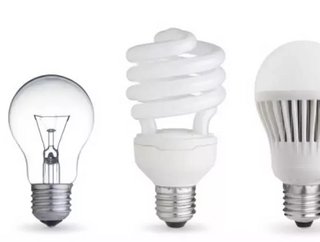The truth about the incandescent bulb ban

Make sure to check out the latest issue of Energy Digital magazine
Lights out for the common household incandescent bulb came on Jan. 1, 2014, as the final step of the Energy Independence and Security Act takes effect phasing out 40- and 60-watt bulbs.
On the heels of the 100-watt (2012) and 75-watt (2013) phaseouts, the lighting industry has seen rapid acceleration of technology resulting in growing consumer acceptance of energy-efficient bulbs. Today, one out of every three light bulbs purchased is a CFL or LED bulb.
Read more about smart energy news:
Utilities bringing power to the people
Top 10 trends in green building for 2014
LED technology has experienced the largest growth − more than doubling in popularity during the last year − as prices have decreased significantly and customers have grown more accustomed to seeing LEDs in other consumer products such as televisions, computers and car headlights.
Following are five things consumers need to know about the change:
- You can keep your current bulbs. According to the legislation, consumers can still use their existing incandescent light bulbs and retailers are allowed to sell bulbs they have on their shelves and in stock. Manufacturers are simply required to stop producing noncompliant products. Some specialty types of incandescent light bulbs, such as reflectors, three-way, appliance and some decorative bulbs, are exceptions to the law and can still be manufactured.
- You won't notice a major difference. Halogen light bulbs are a popular pick by interior designers because of their crisp, white light and welcoming ambiance. For customers who love the look and feel of incandescent light bulbs, there is no need to worry. Manufacturers have developed halogen light bulbs that both meet the new efficiency standards and offer the characteristics of traditional bulbs. While these bulbs may cost more up front, they pay off in the long run by saving 28 percent in energy costs over the life of the product.
- You won't replace your bulb until your baby graduates from college. It's a great time to upgrade to LED light bulbs as prices have steadily decreased while performance and appearance have improved. According to Lowe's manufacturers, an average LED bulb will last more than 22 years (based on three hours of usage per day), and over its lifetime will cost about $30 to operate, whereas an incandescent bulb will cost $165 over the same period of time. Lowe's carries a wide variety of LED bulbs for almost every household application with prices starting under $10.
- These aren't the CFLs of years past. CFLs, one of the most popular replacements for incandescent bulbs, have changed dramatically with recent technological improvements. Manufacturers have addressed common customer feedback so that these bulbs now create better light output and turn on faster when you flip a switch. Once considered a safety concern because of mercury content, today's CFLs contain less mercury than a common household thermometer.
- There's a full light spectrum for different applications. Light bulbs are available in a variety of color temperatures and should be selected based on application and personal preference. Soft or warm white, the standard color range of incandescent and halogen bulbs measures between 2,500 and 3,000 kelvins (K), providing perfect ambient lighting for bedrooms, living rooms and dens. A bright white or cool white, which measures between 3,500 and 4,100K, is ideal for kitchens, workspaces, bathrooms and other areas of the home where tasks are performed. A daylight temperature of 5,000 to 6,500K is ideal for outdoor applications and detailed tasks.
For more information, visit Lowe's Light Bulb Legislation Frequently Asked Questions.






